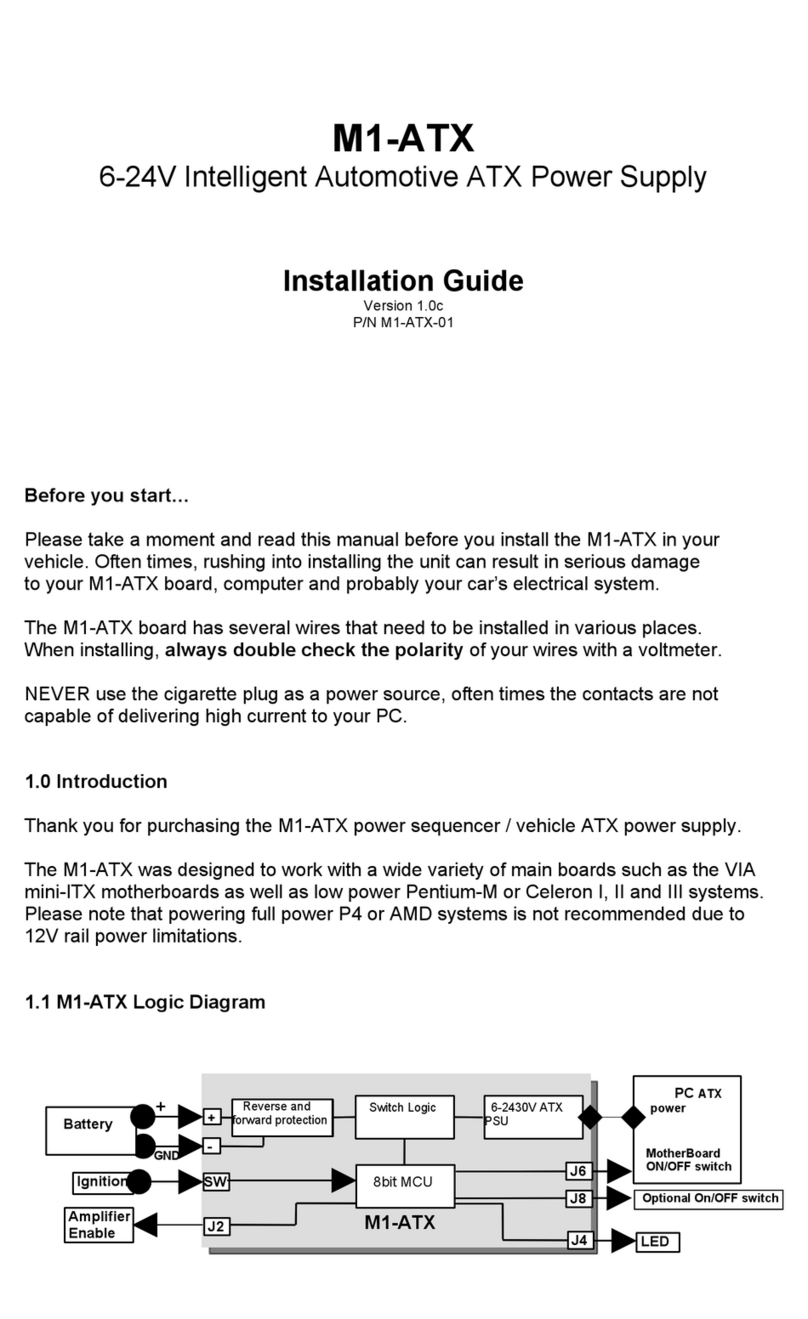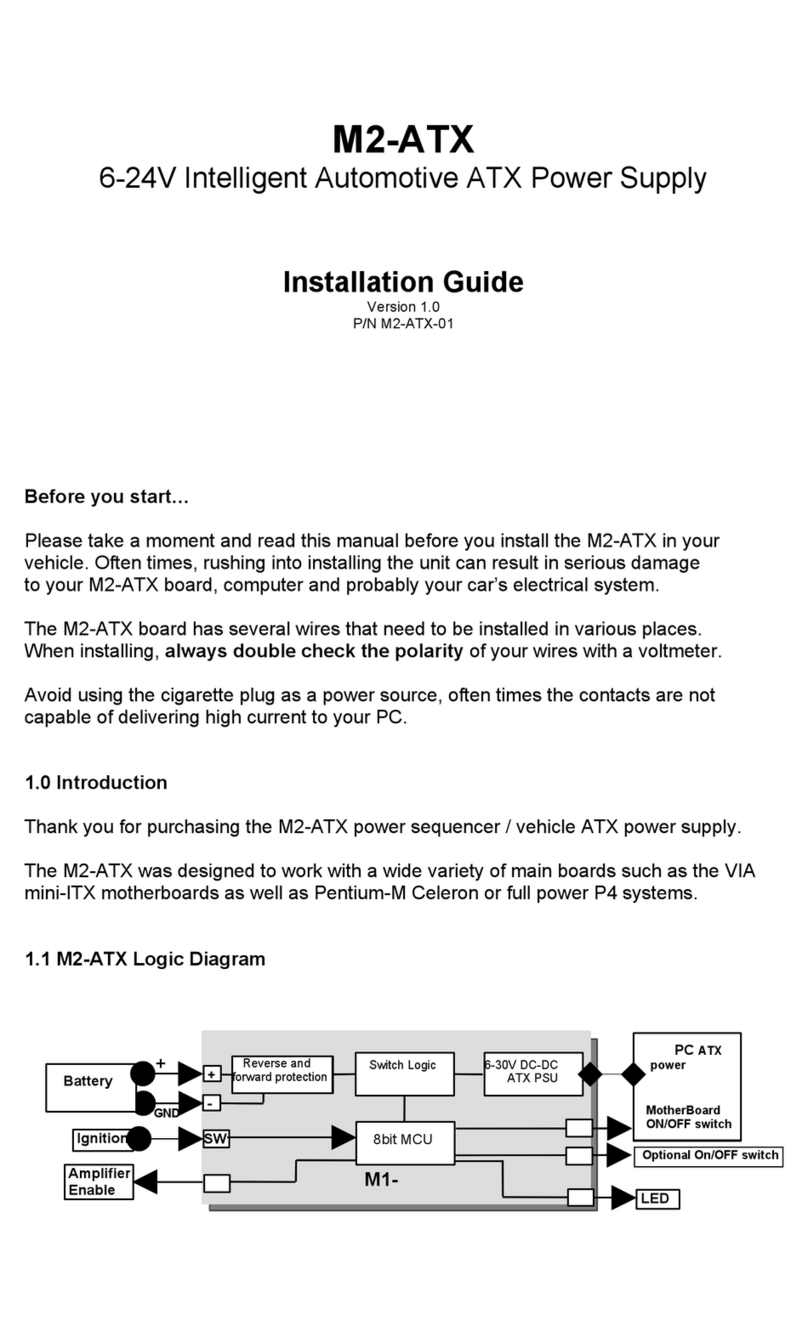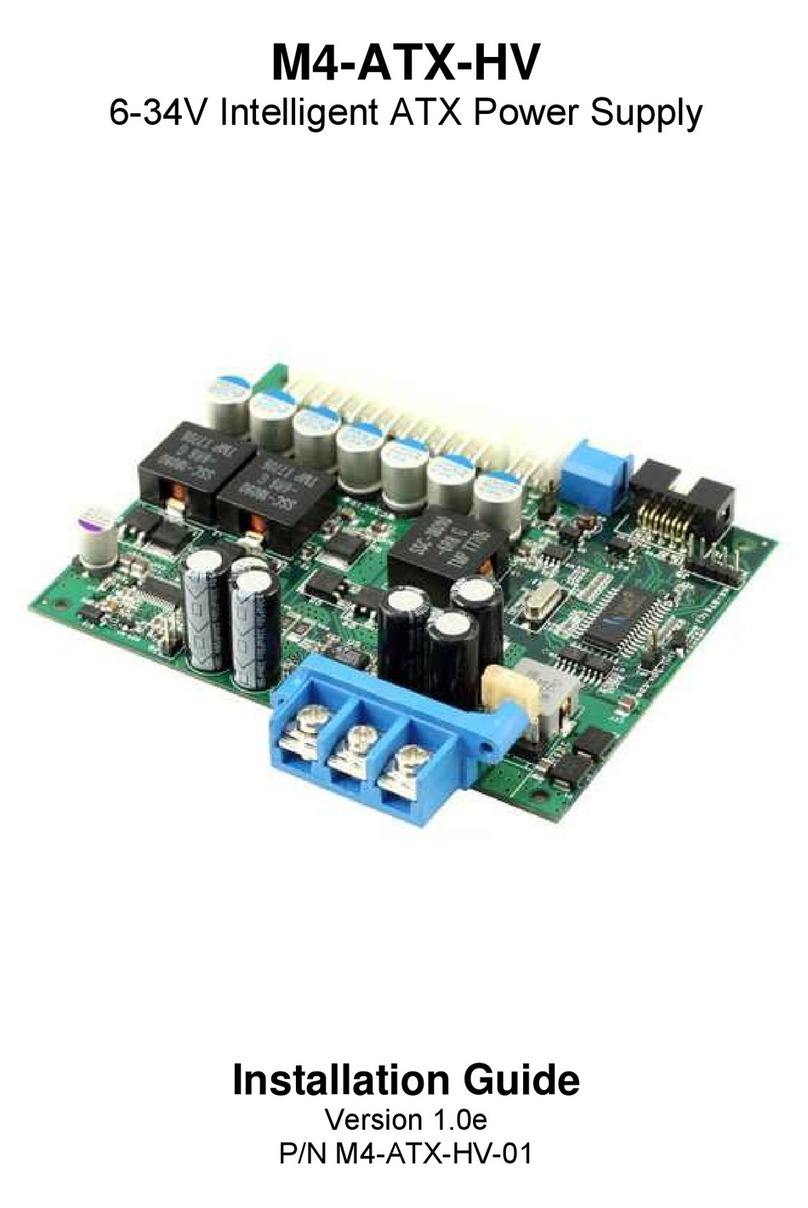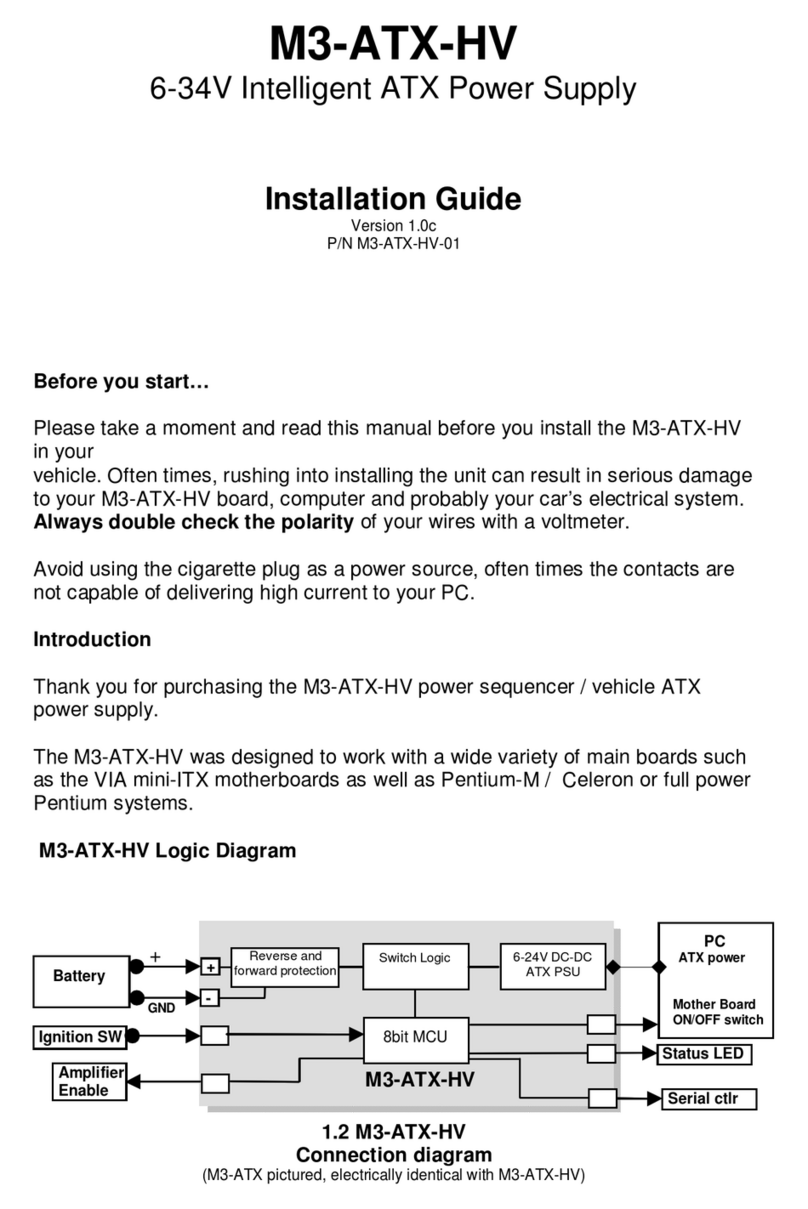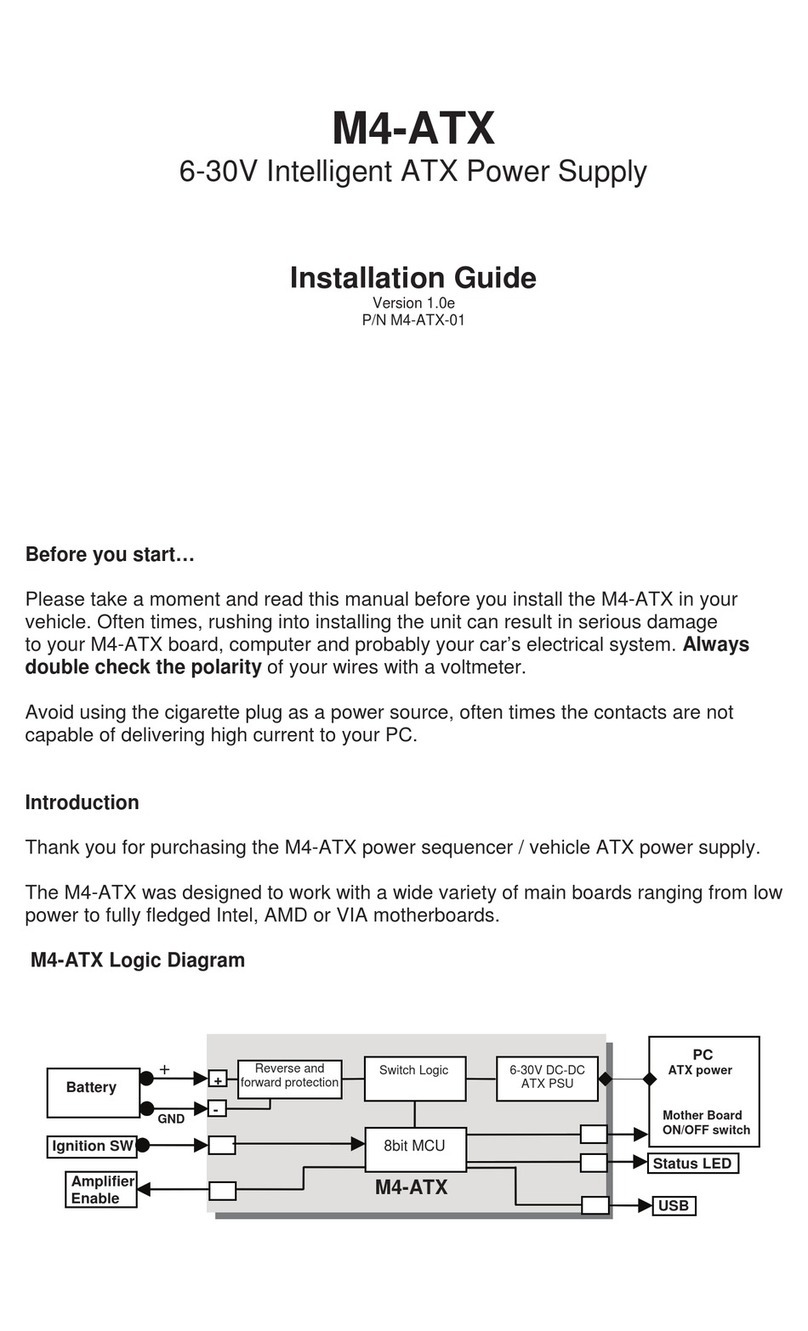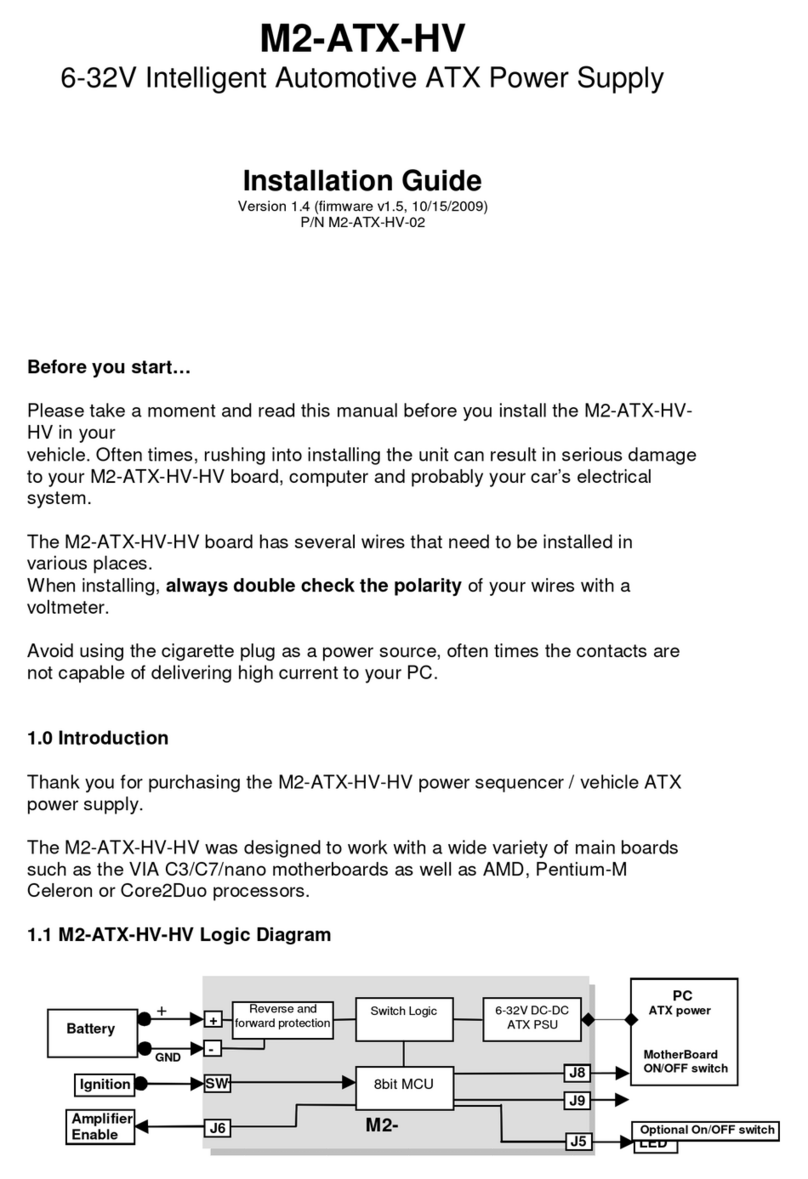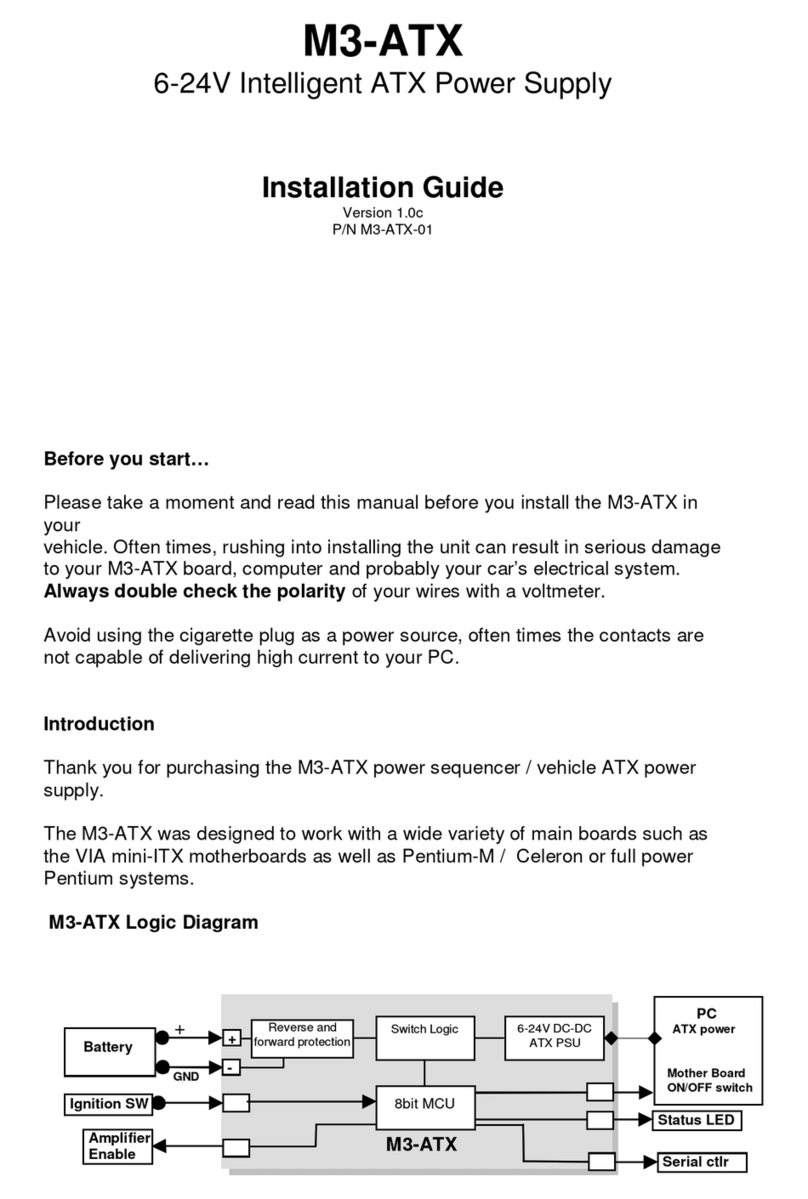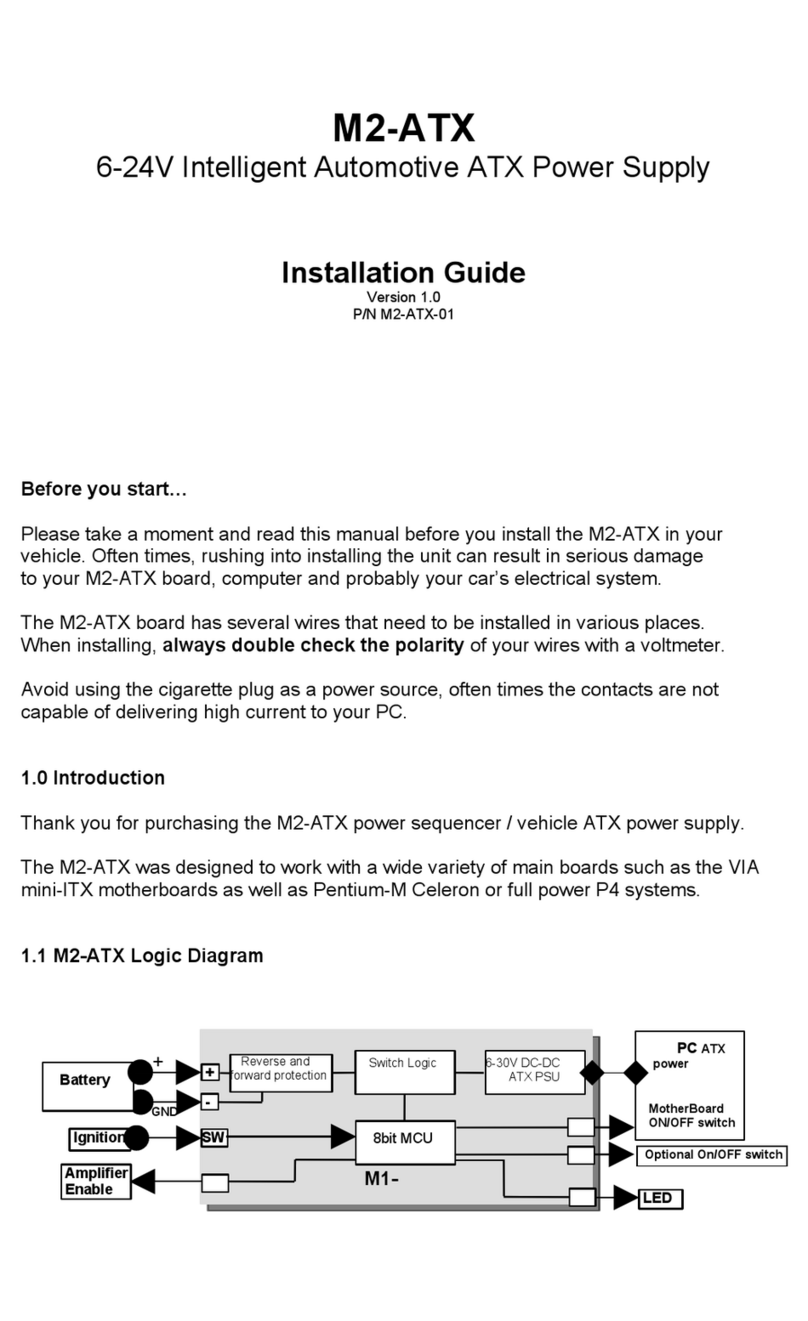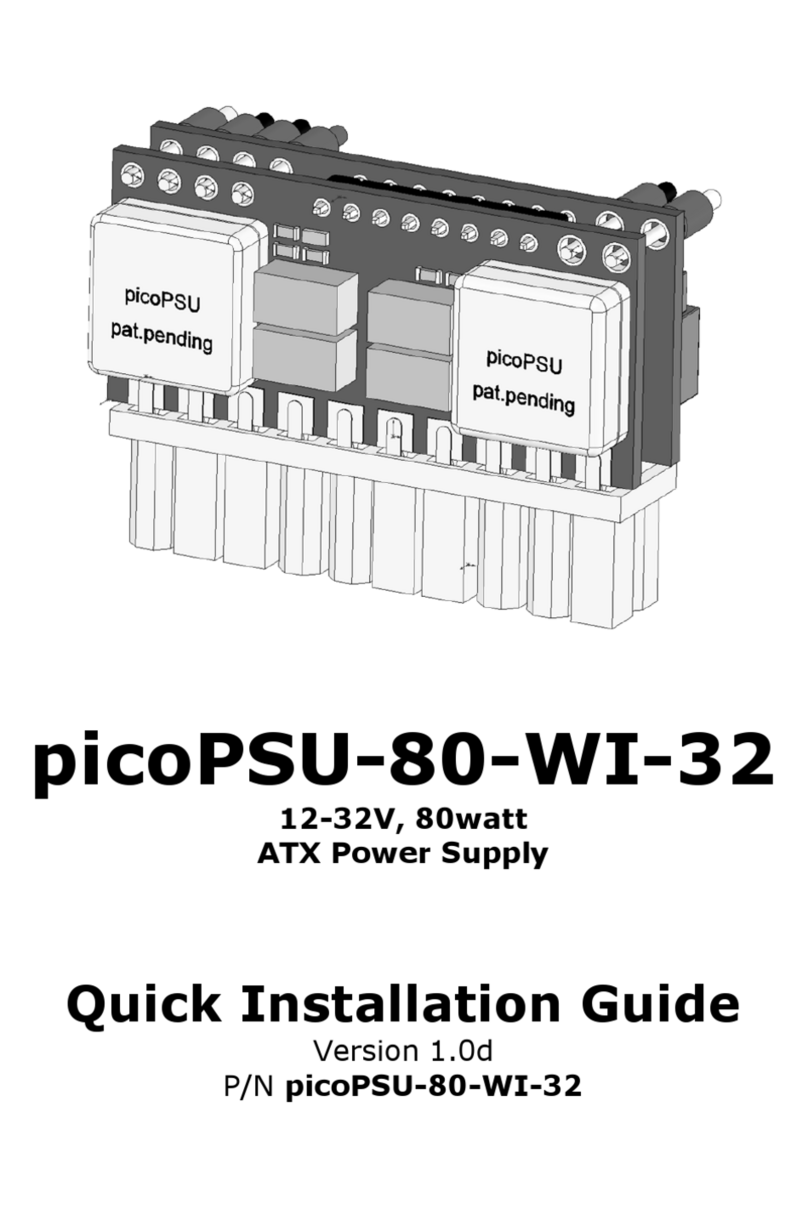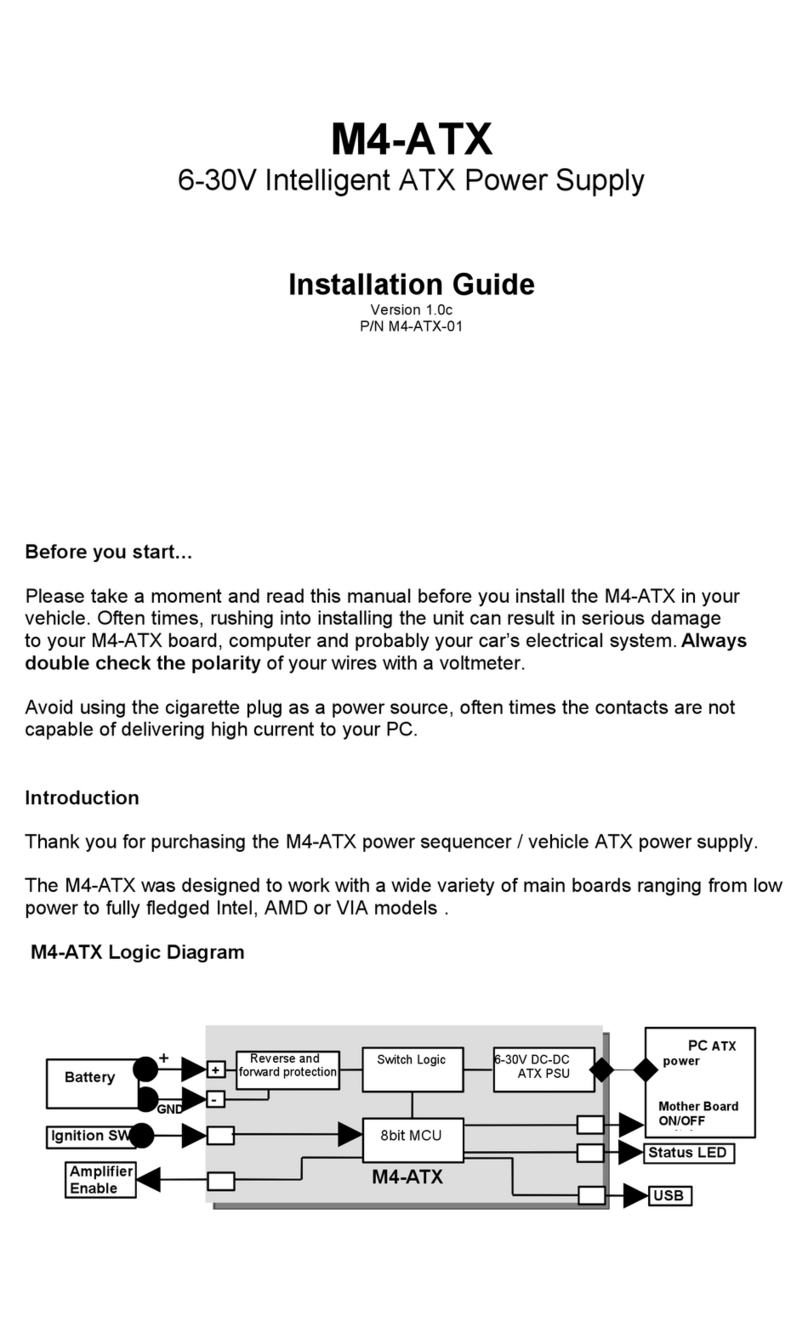P6: Sends ON pulse to motherboard when ignition is ON for more than 2 seconds, sends OFF pulse to
motherboard
30 minutes
after ignition is turned off.
NEVER
shuts down 5VSB ( !!!
risk of battery
depletion !!!)
.
P7: Sends ON pulse to motherboard when ignition is ON for more than 2 seconds, sends OFF pulse to
motherboard
3 hours
after ignition is turned off.
NEVER
shuts down 5VSB ( !!!
risk of battery
depletion !!!)
.
Power challenges in a Vehicle PC:
One of most difficult tasks of operating a PC in a vehicle is power consumption while the
computer is OFF. Even when your computer is OFF or in Suspend, it will still consume about
50-150mA on the 5VSB rail.
No matter how big your battery is, you will eventually drain it if proper actions are not taken.
The M4- V ATX is addressing these issues by cutting off the 5VSB rail after a pre-defined
amount of time (see jumper chart, ARDOFF). During the ARDOFF if the battery level drops
below 11.2V for more than one minute, M4- V ATX will shut down and re-activate only when
the input voltage is > 12V.
Engine Cranks, under-voltage and over-voltage situations.
Another difficult task is maintaining stable power to your PC. While car batteries are rated at
12V, they actually provide voltages in between 8-16V (engine cranks) or as high as 80 volts
(load dump).
Most of the times, your battery will stay at 13.5V (while car is running) but extra precautions
need to take place in order to prevent such situations. M4- V ATX can operate as low as 6V
and as high as 34V while providing strict regulation on all rails along with input voltage
clamping and reverse protection.
Loud am lifier o s when PC starts (Anti-Thumb).
If your PC is connected to your car amplifier, you will hear a loud pop when the computer is
first started. The M4- V ATX has an `anti-thump' control that will keep your amp OFF while
the PC starts. Simply connect the 2 pin wire to J6 harness to your amplifier remote control
pins. The pin at the edge of the PCB is GND, inner pin is OT.
Mode of o eration
1. Ignition=OFF. Nothing happens. M4- V ATX is waiting for ignition signals.
2. Ignition=ON. M4- V ATX waits for 2-3 seconds then turns on the 5Vsb rail. After
another second M4- V ATX sends an "ON" signal to the motherboard via the 2 wires
connected to the motherboard's ON/OFF pins. The motherboard will turn ON and your
system should start booting. The Ignition state will be latched for 60 more seconds so
that the motherboard will have a change to come up in a clean manner.
3. Ignition=ON. Your computer will remain ON.
4. Ignition=OFF. M4- V ATX waits for "OFFDELAY" in seconds (see jumper chart) and then
it turns the motherboard OFF by sending a signal to the motherboard's ON/OFF switch.
Your computer should turn off gracefully (shutdown procedure). After shutdown, 5VSB
will still be provided for another " ARDOFF" seconds. In the event where the shutdown
process is longer than " ARDOFF" (Operating System gets frozen, etc), power will be
shut down hard, turning off all power rails. During the ARDOFF procedure, the battery
levels will be constantly monitored to prevent deep discharge situations.
5. M4- V ATX will go to step 1, if ignition is tuned ON again.
4
